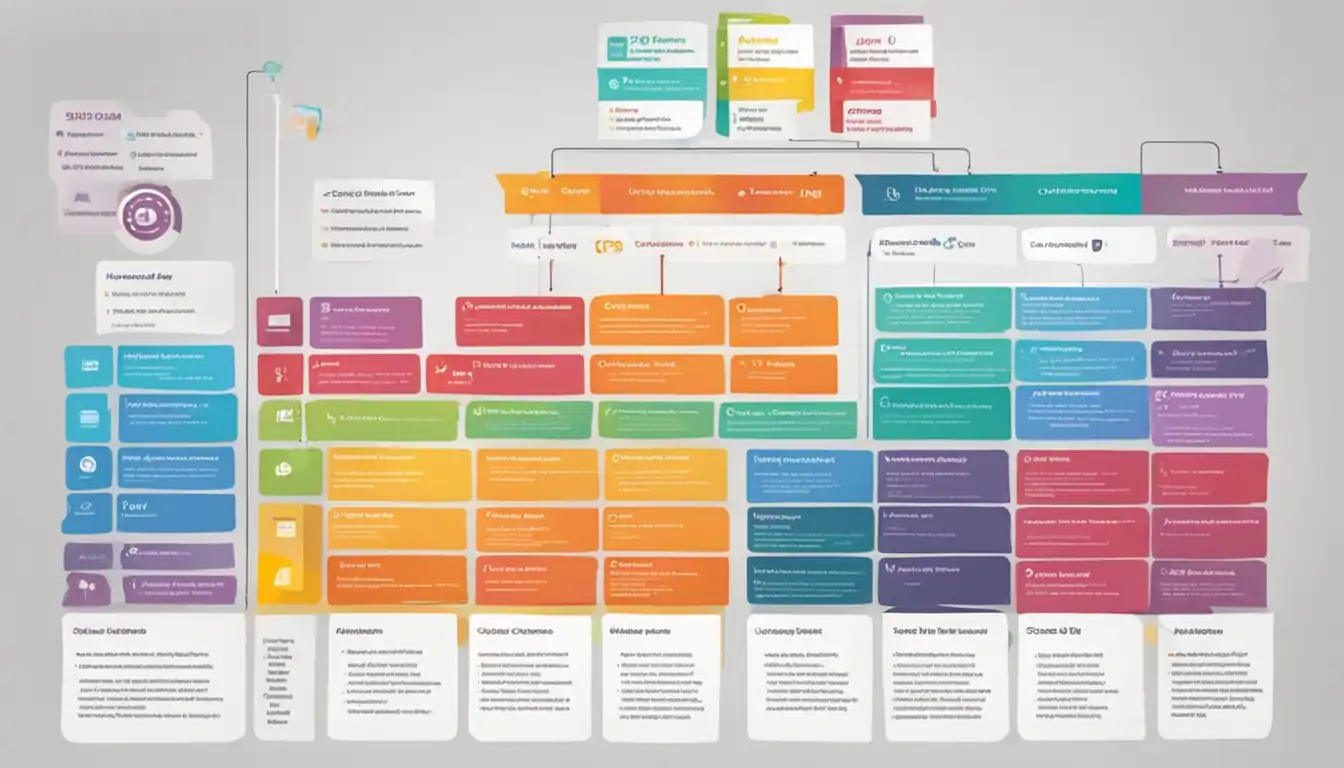Content Cornerstone Pages for SEO

When it comes to boosting your website's visibility and ranking on search engines, content is king. And at the heart of any successful SEO strategy lies cornerstone pages. But what exactly are these cornerstone pages, and why are they so important for your site's success? In this post, we'll delve into the world of content cornerstone pages for SEO, exploring what they are, how to create them effectively, and how to optimize and promote them for maximum impact.
Understanding Cornerstone Content
What is Cornerstone Content?
Cornerstone content is a vital component of a website's SEO strategy. It refers to the most important and foundational articles or pages on a website that cover the core topics and themes of the business or industry. These pages are typically comprehensive, well-researched, and provide valuable information to users.
Why is it Crucial for SEO?
Cornerstone content plays a crucial role in SEO for several reasons:
Establishes Authority: By creating cornerstone content that covers key topics in depth, you establish your website as an authority in your niche.
Improves Site Structure: Organizing your cornerstone content around key topics helps improve the overall structure of your website, making it easier for search engines to crawl and index your site.
Increases Traffic: Well-optimized cornerstone content can attract more organic traffic to your site by targeting high-volume keywords and providing valuable information that users are searching for.
Encourages Backlinks: High-quality cornerstone content is more likely to attract backlinks from other websites, which can further boost your site's authority and rankings in search engine results.
In summary, cornerstone content is essential for SEO as it helps establish authority, improves site structure, increases traffic, and encourages backlinks. It should be a central focus of any comprehensive SEO strategy.
Planning Your Cornerstone Content

When it comes to creating cornerstone pages for SEO, proper planning is essential. Here are some key steps to consider:
Identifying Key Topics
To start, identify the key topics or themes that are most relevant to your business and target audience. These topics should be broad enough to cover a range of related subtopics, but specific enough to provide valuable and in-depth information.
Aligning with Business Goals
Next, ensure that your cornerstone content aligns with your overall business goals. This means that the topics you choose should not only be relevant to your audience, but also support your brand messaging and objectives. By aligning your cornerstone content with your business goals, you can create a cohesive and strategic approach to SEO that drives results.
Creating Effective Cornerstone Pages

Cornerstone pages are crucial for SEO as they serve as the foundation of your website's content strategy. These pages are designed to provide comprehensive information on a specific topic, making them valuable resources for both users and search engines. Here are some key elements to consider when creating cornerstone pages:
Essential Elements of a Strong Page
Keyword Research: Conduct thorough keyword research to identify relevant keywords that align with your target audience's search intent.
Comprehensive Content: Create in-depth, high-quality content that covers all aspects of the topic in detail. This helps establish your authority on the subject matter.
Internal Linking: Incorporate internal links to other related pages on your website to improve navigation and encourage users to explore more content.
Optimized Meta Tags: Write compelling meta titles and descriptions that accurately reflect the content of the page and entice users to click through from search results.
Mobile-Friendly Design: Ensure that your cornerstone page is optimized for mobile devices to provide a seamless user experience across all platforms.
Writing Tips to Boost Engagement
Clear Structure: Organize your content into sections with subheadings to make it easier for readers to scan and find relevant information quickly.
Useful Visuals: Include images, infographics, videos, or other visual elements to enhance the readability and engagement of your cornerstone page.
Engaging Call-to-Actions (CTAs): Encourage user interaction by incorporating clear CTAs throughout the page, prompting visitors to take desired actions such as signing up for a newsletter or downloading a resource.
Regular Updates: Keep your cornerstone pages up-to-date with fresh information and insights to maintain their relevance and authority over time.
User-Focused Language: Write in a clear, concise manner using language that resonates with your target audience, avoiding jargon or overly technical terms that may confuse readers.
Incorporating these essential elements and writing tips into your cornerstone pages can help boost their visibility in search engine results and enhance user engagement on your website.
Optimizing for Search Engines
Creating content cornerstone pages is essential for SEO success. These pages serve as the foundation of your website's content strategy and can significantly impact your search engine rankings. By focusing on creating high-quality, comprehensive content that addresses key topics in your industry, you can establish your website as an authority in the eyes of search engines.
Keyword Integration Strategies
When creating content cornerstone pages, it is crucial to incorporate relevant keywords strategically. Conduct thorough keyword research to identify the terms and phrases that your target audience is searching for. Integrate these keywords naturally throughout your content, including in headings, subheadings, meta tags, and body copy. Avoid keyword stuffing, as this can harm your SEO efforts.
Key points:
- Conduct thorough keyword research
- Integrate keywords naturally throughout the content
- Avoid keyword stuffing
On-Page SEO Best Practices
In addition to keyword integration, there are several on-page SEO best practices to keep in mind when creating content cornerstone pages. Optimize meta tags, including title tags and meta descriptions, to accurately reflect the page's content and target keywords. Use descriptive URLs that include relevant keywords. Incorporate internal links to other relevant pages on your website to improve navigation and boost SEO.
Key points:
- Optimize meta tags
- Use descriptive URLs
- Incorporate internal links
Promoting Your Cornerstone Content
Creating cornerstone pages is just the first step in maximizing their potential for SEO. Once you have developed high-quality, comprehensive content, it's essential to promote these pages effectively to ensure they reach a wider audience and drive organic traffic to your website.
Internal Linking Techniques
Internal linking is a crucial aspect of SEO that can significantly impact the visibility and ranking of your cornerstone content. By strategically linking from other relevant pages on your website to your cornerstone pages, you can improve their authority and help search engines understand the importance of these pages within your site's hierarchy.
Key Points for Internal Linking:
- Use descriptive anchor text that includes relevant keywords
- Link from high-authority pages on your website
- Create a logical hierarchy of internal links to guide users through your site
By incorporating internal links to your cornerstone content throughout your website, you can improve their visibility and increase the likelihood of them ranking higher in search engine results.
Leveraging Social Media and Email Marketing
In addition to internal linking, leveraging social media and email marketing can also help promote your cornerstone content to a broader audience. By sharing links to these pages on social media platforms such as Facebook, Twitter, and LinkedIn, you can drive traffic back to your website and increase engagement with your content.
Tips for Social Media Promotion:
- Craft compelling social media posts that highlight the value of your cornerstone content
- Share snippets or quotes from the content to pique interest
- Encourage followers to share the posts with their networks
Email marketing is another effective strategy for promoting cornerstone content. By including links to these pages in newsletters or promotional emails sent to your subscribers, you can direct targeted traffic to these key pieces of content and increase their visibility.
Incorporating internal linking techniques and leveraging social media and email marketing are essential strategies for promoting your cornerstone content and maximizing its impact on SEO. By implementing these tactics effectively, you can enhance the visibility of these important pages and drive organic traffic to your website.
Measuring Success of Cornerstone Pages

Creating cornerstone pages for SEO is a crucial aspect of any content strategy. These pages serve as the foundation of your website's content, providing valuable information to both users and search engines. But how do you measure the success of these cornerstone pages? Here are some key metrics to track:
Key Metrics to Track
Organic Traffic: Monitor the amount of organic traffic that is being driven to your cornerstone pages. This can give you insight into how well they are performing in search engine results.
Keyword Rankings: Keep an eye on where your cornerstone pages rank for their target keywords. Improving these rankings can lead to increased visibility and traffic.
Engagement Metrics: Look at metrics such as bounce rate, time on page, and click-through rate to gauge how engaged users are with your cornerstone content.
Conversions: Ultimately, the goal of your cornerstone pages is to drive conversions. Track conversion rates and see if there are any areas that need improvement.
Tools for Analysis and Improvement
When it comes to analyzing and improving the performance of your cornerstone pages, there are several tools that can be incredibly helpful:
Google Analytics: This tool provides valuable insights into the traffic and engagement metrics of your cornerstone pages.
Google Search Console: Use this tool to monitor keyword rankings, click-through rates, and other important SEO data for your cornerstone content.
SEMrush: A comprehensive SEO tool that can help you track keyword rankings, analyze backlinks, and conduct competitive research for your cornerstone pages.
Ahrefs: Another powerful SEO tool that offers features such as site audits, keyword research, and competitor analysis to help improve the performance of your cornerstone content.
By regularly tracking these key metrics and utilizing these tools for analysis and improvement, you can ensure that your cornerstone pages are driving valuable organic traffic and helping you achieve your SEO goals.
Conclusion
In conclusion, mastering the art of content cornerstone pages is essential for any business looking to improve its online presence and drive organic traffic. By understanding the importance of these key pages, planning strategically, creating engaging content, optimizing for search engines, promoting effectively, and measuring success accurately, you can take your SEO game to the next level. So get started today and watch as your website climbs the ranks in no time!